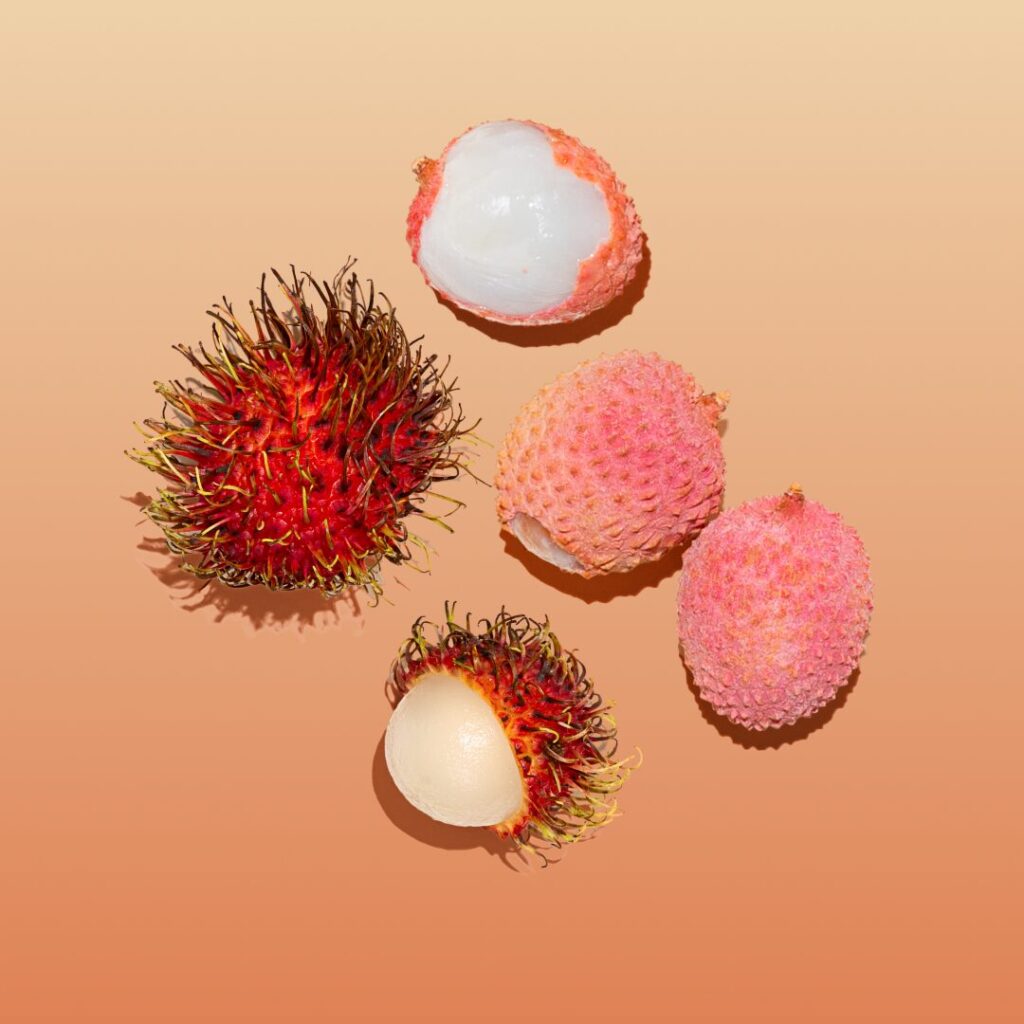
If you’ve ever spotted spiky red fruit at the grocery store and thought, “Is that a lychee?”—you’re not alone. Rambutan and lychee are often confused for one another. Both are tropical fruits with juicy, translucent flesh and a burst of floral sweetness. But they’re not quite the same.

Here’s a breakdown of rambutan vs. lychee—what they are, what makes them different, and how to enjoy each one.
What Is Rambutan?
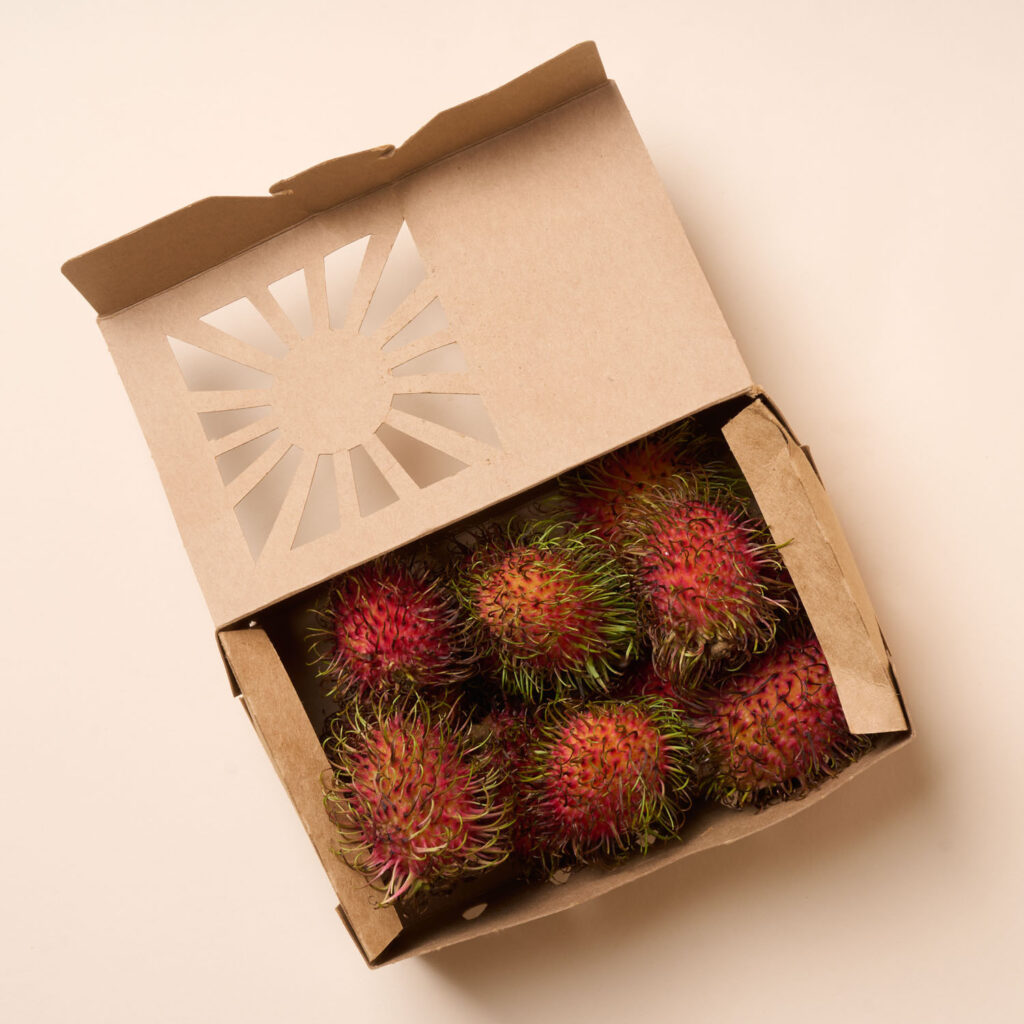
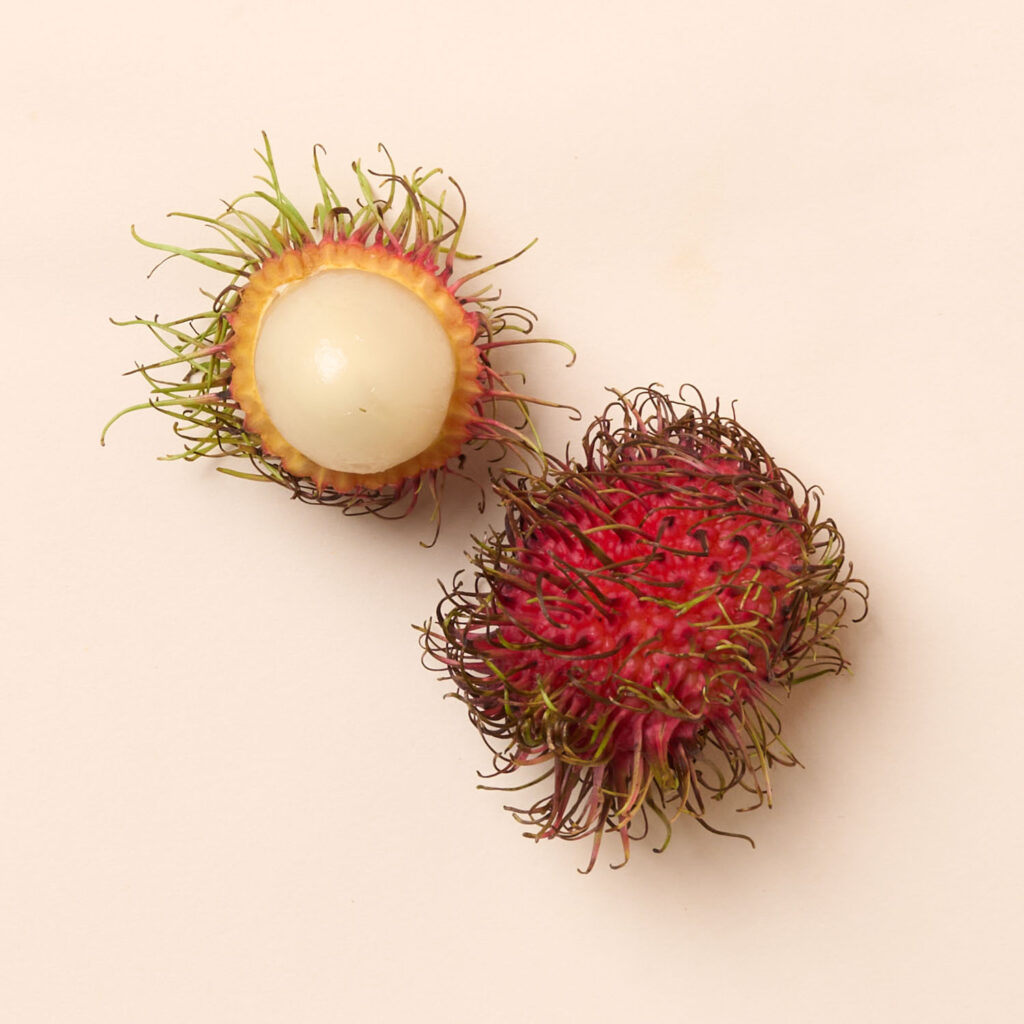
Rambutan is a tropical fruit native to Southeast Asia, known for its vibrant red skin covered in soft, hair-like spikes. The name “rambutan” actually comes from the Malay word for “hair.”
Beneath its fuzzy exterior, rambutan fruit reveals juicy, white or pale-pink flesh that surrounds a large central seed.
What does rambutan taste like?
Rambutan tastes mildly sweet and creamy, with floral notes and a texture similar to grapes. It’s less tart than lychee and slightly richer in flavor.
What Is Lychee?
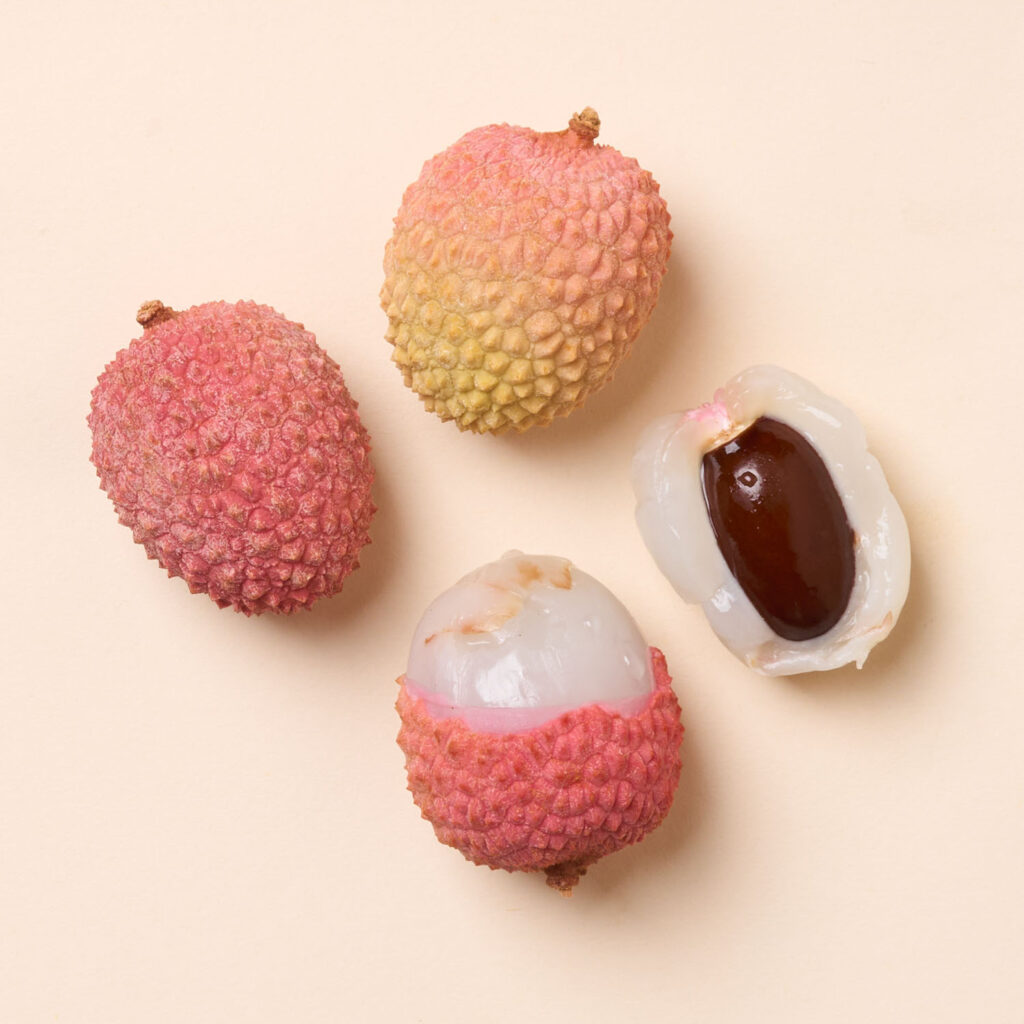
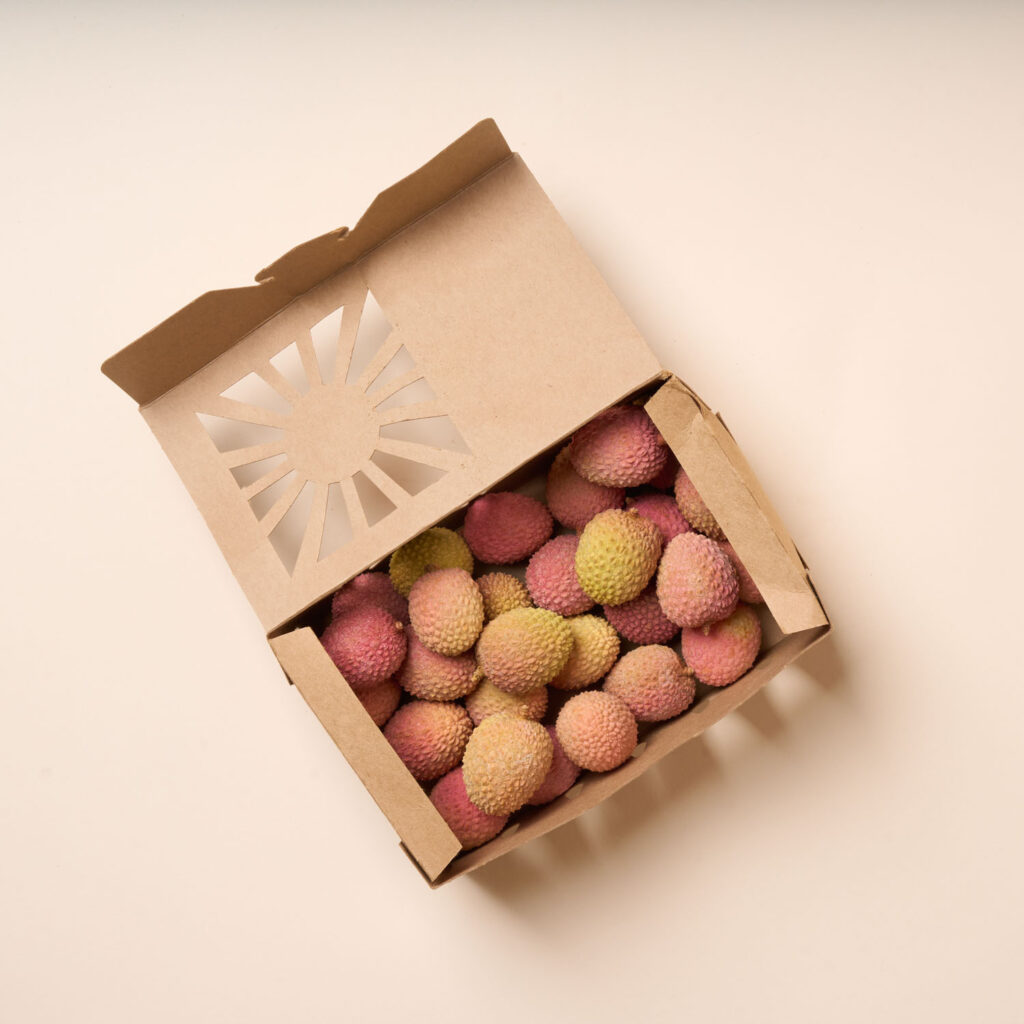
Lychee (also spelled litchi) is another tropical fruit native to southern China and widely grown throughout Asia and parts of Africa and the Caribbean. It has a rough, bumpy pinkish-red rind that’s easy to peel.
Inside, the lychee fruit has delicate, pearly white flesh that is juicy and fragrant with a signature floral aroma.
What do lychees taste like?
Lychee is sweet, juicy, and slightly tart with hints of rose and citrus. Compared to rambutan, it has a lighter, more aromatic flavor.
Rambutan vs. Lychee: Key Differences
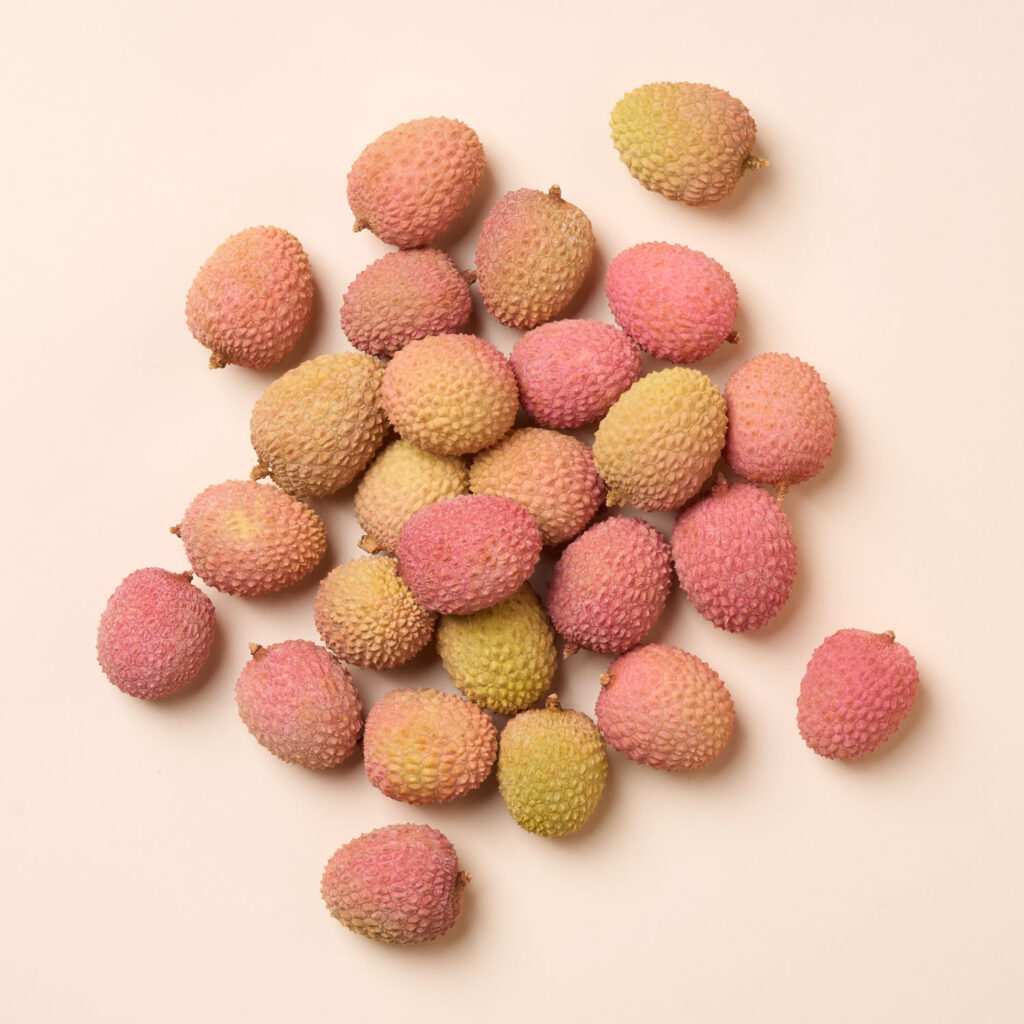
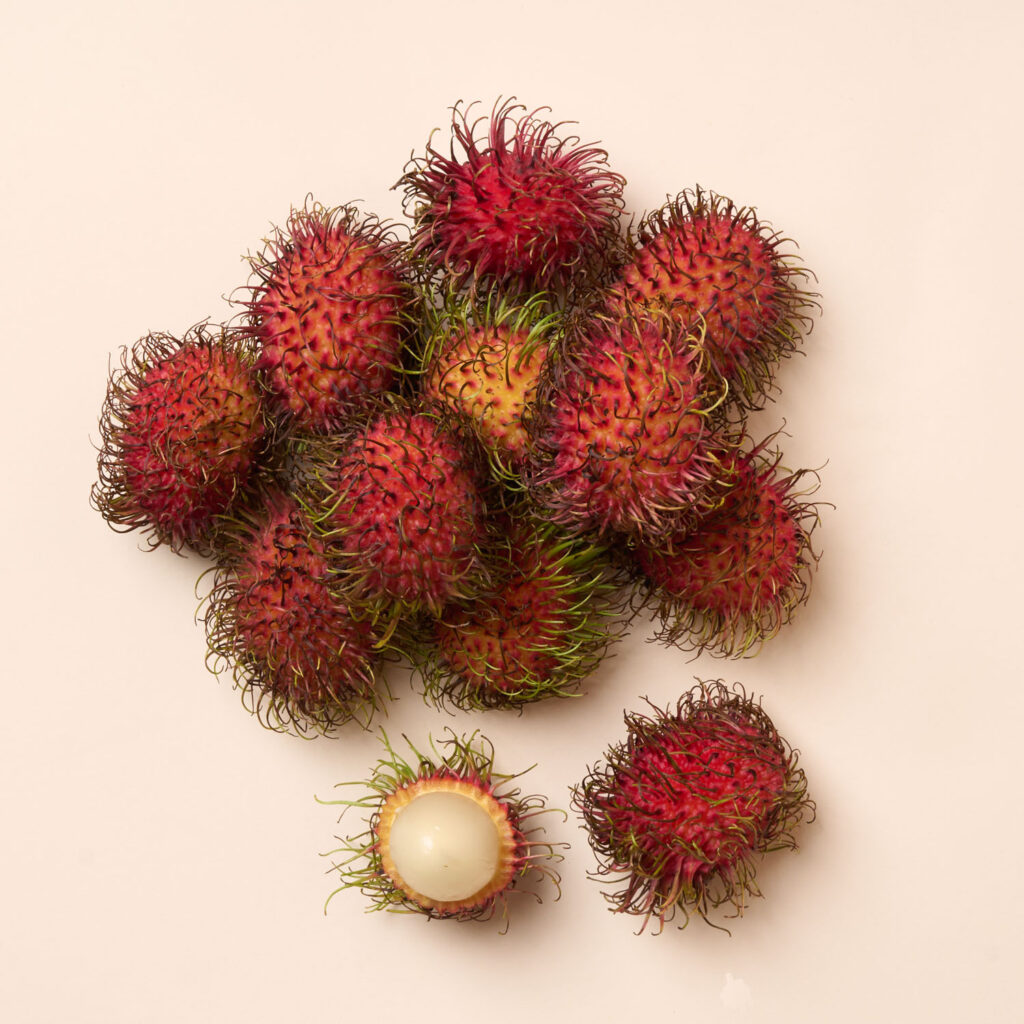
| Rambutan | Lychee | |
| Skin | Red with soft, hair-like spikes | Bumpy red or pink shell |
| Flesh | White or pale pink, creamy texture | Translucent white, firmer texture |
| Flavor | Mildly sweet, creamy, less tart | Sweet and floral with light tartness |
| Origin | Southeast Asia (Malaysia, Indonesia) | Southern China |
| Seed | Oval seed, can sometimes stick to flesh | Smooth seed, easier to separate |
Why People Confuse Rambutan & Lychee
Both rambutan and lychee, or litchi, fruits are tropical, similar in size, and have translucent flesh inside a reddish shell. They’re often found in the same section of specialty produce stores and have overlapping harvest seasons.
However, once you know what to look for—rambutan’s hairy exterior vs. lychee’s pebbled skin—it becomes easier to tell them apart.
How to Enjoy Rambutan & Lychee
- Eat lychee and rambutan fresh: Simply slice into the rind and pop out the flesh (remove the seed before eating).
- Add to fruit salads: Both fruits pair well with citrus, mango, and melon.
- Make drinks: Add to cocktails, iced teas, or smoothies for a tropical twist.
- Use in desserts: Lychee and rambutan are delicious in sorbets, jellies, or panna cottas.
Pro tip: Store both fruits in the refrigerator for up to a week, but let them come to room temperature before eating to enjoy the full flavor.
Where to Find Rambutan & Lychee
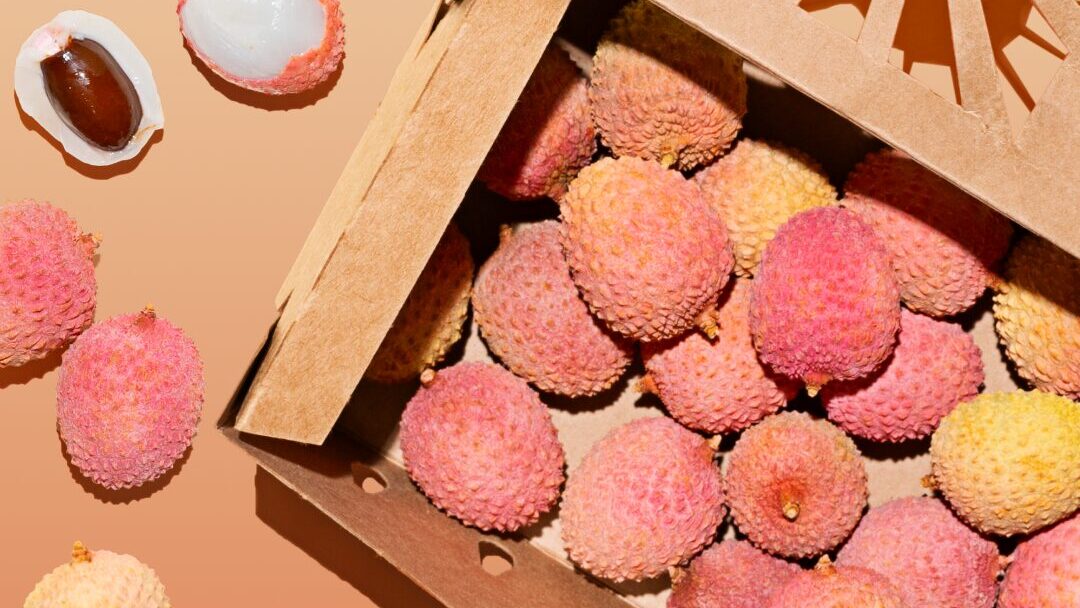
You can often find rambutan and lychee online through retailers like Misfits Market—especially when they’re in season.
TL;DR: Rambutan vs. Lychee (or Litchi)
- Rambutan is hairier, creamier, and a bit less tart.
- Lychee is smoother, juicier, and more floral.
- Both are worth trying if you love tropical fruit.
Want to try one (or both) for yourself? Keep an eye on Misfits Market for seasonal tropical fruit, including unique and hard-to-find options like these!
